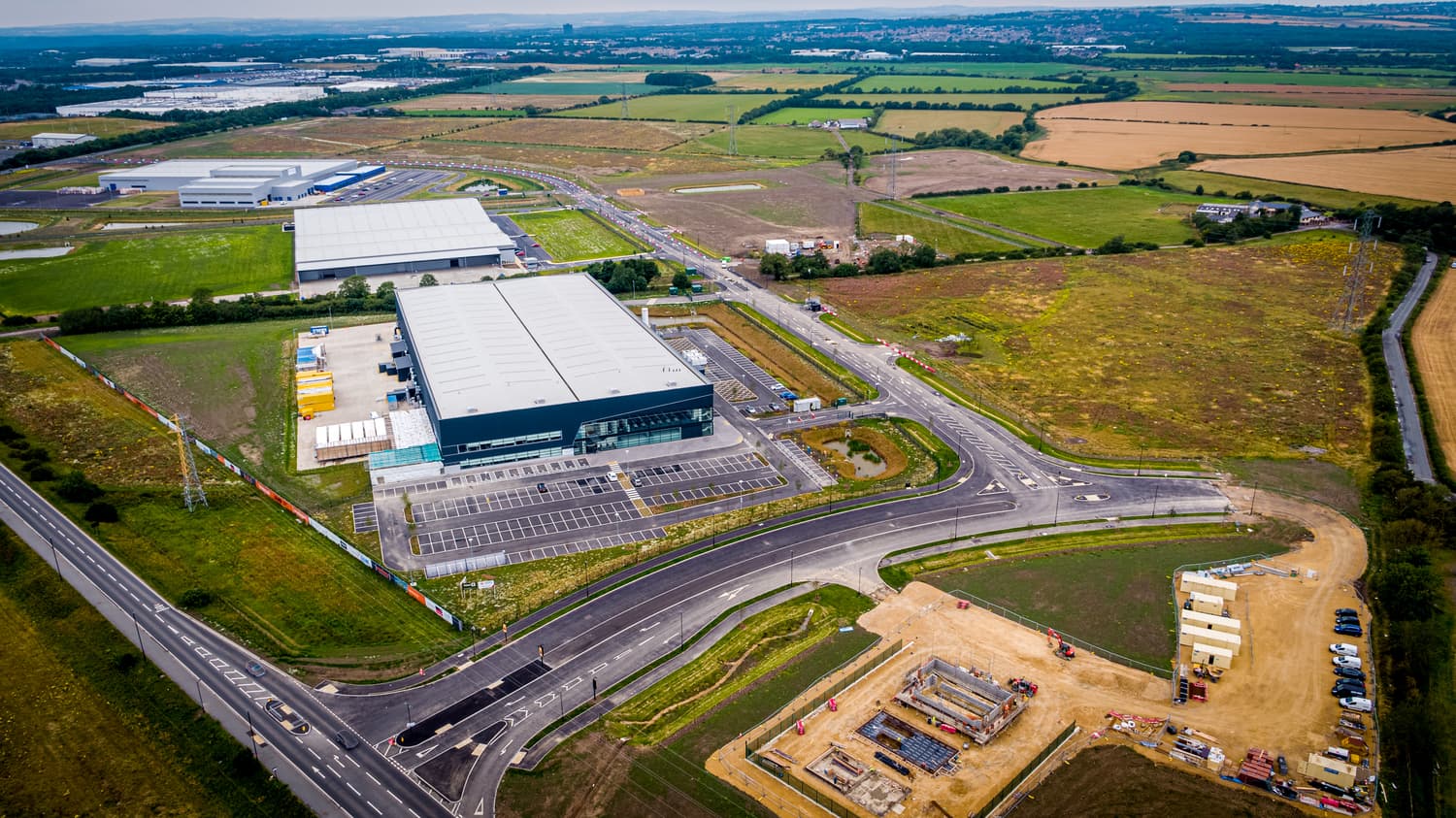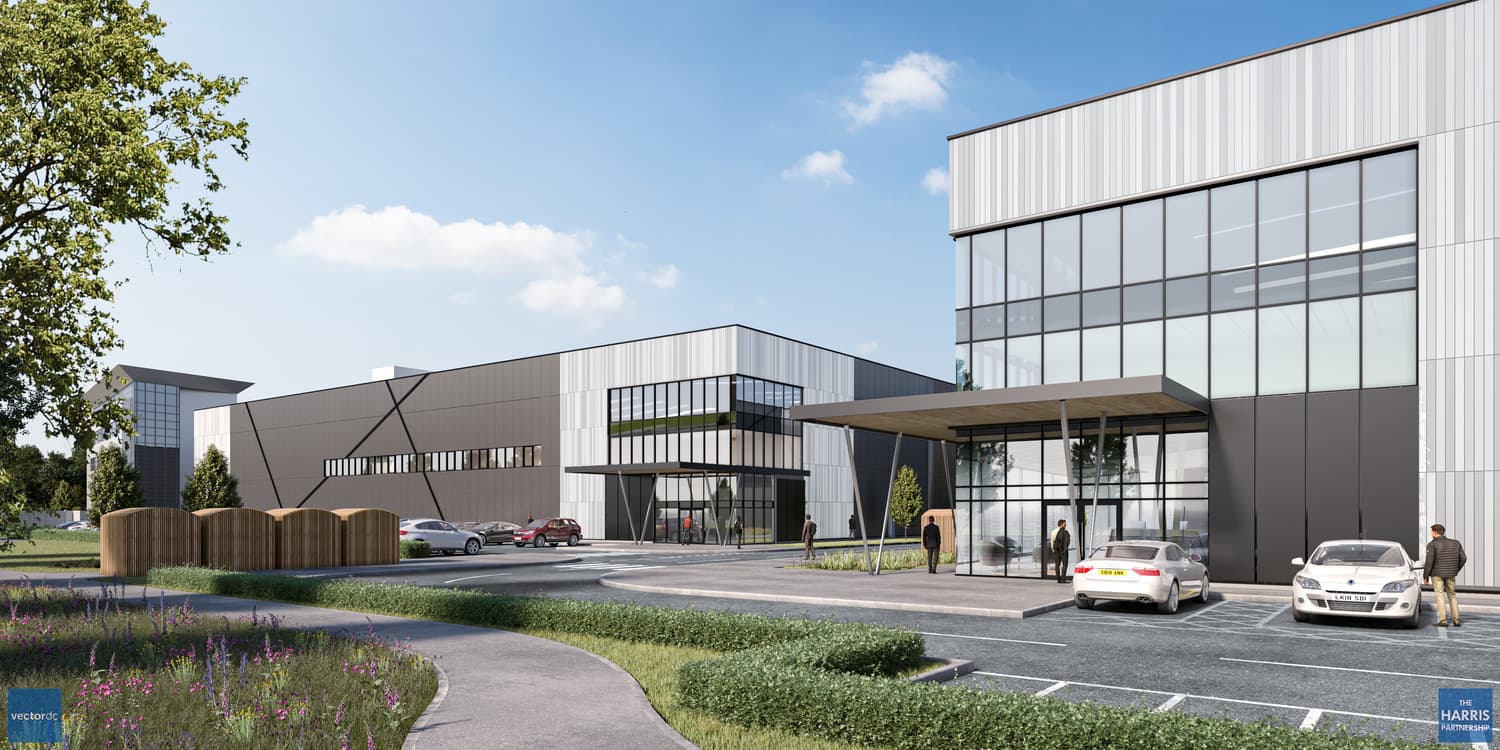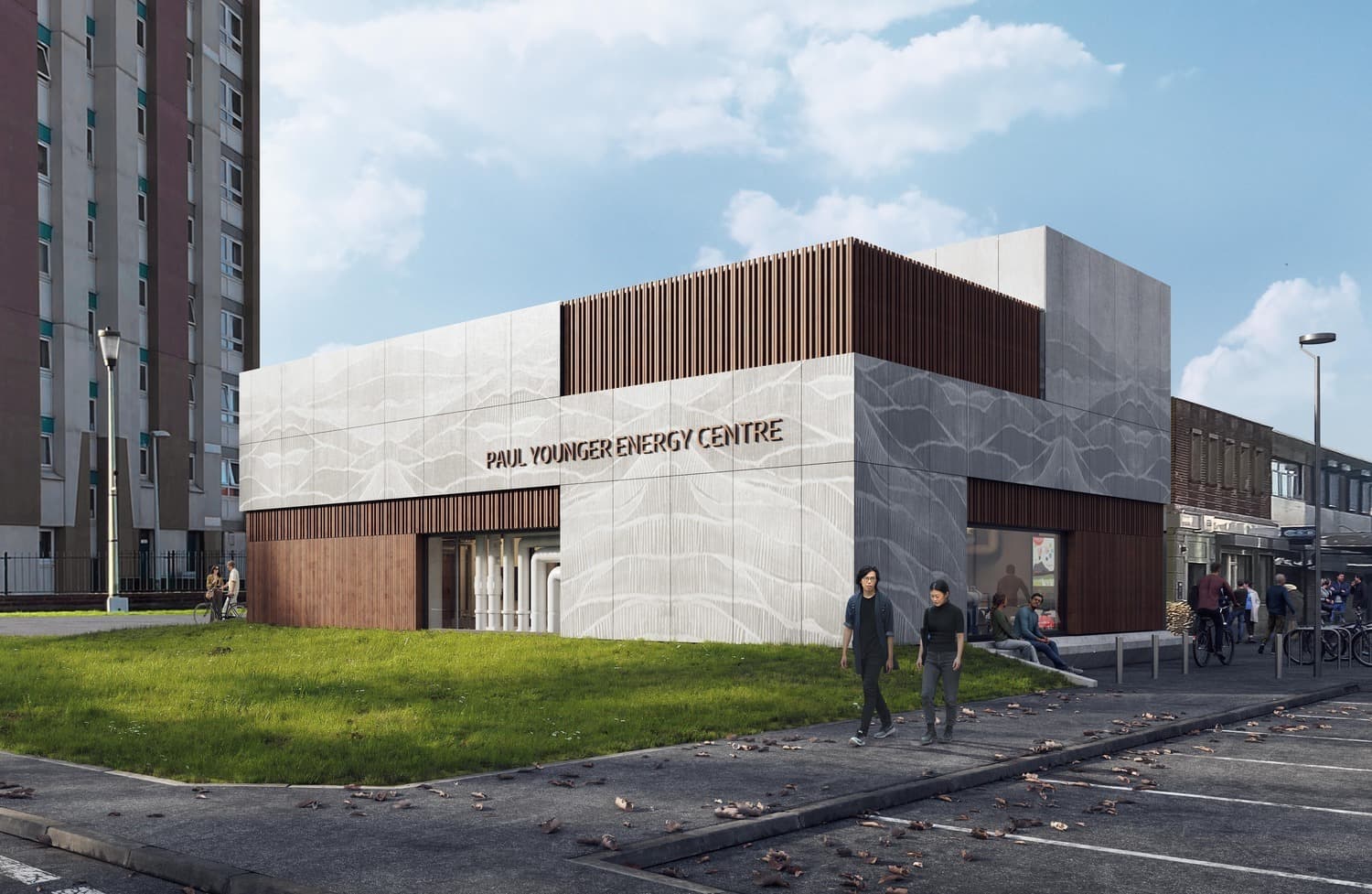As the UK transitions into a new era of economic and industrial policy, construction is poised to play a vital role in reshaping the national landscape. With a renewed government focus on regional growth and reindustrialisation, the spotlight has turned towards regeneration driven by strategic investment in sectors such as high-tech manufacturing, logistics, defence, and green energy.
For stakeholders across the built environment, this marks a once-in-a-generation opportunity to embed economic resilience and long-term community benefit into the fabric of regional Britain.
The Reindustrialisation Imperative
Over recent decades, the UK has seen a gradual decline in traditional manufacturing. However, shifts in global trade, geopolitical tensions and supply chain fragility have reignited domestic industrial ambitions. The Government's evolving strategy seeks to create competitive, self-sufficient regional economies that leverage sectoral strengths—from aerospace to renewables.
Key policy drivers include the recent 2025 Spending Review and Strategic Defence Review, both of which look to reinforce ambitions for capability across manufacturing, defence and energy. Tariff reforms and reshoring incentives are helping to reshape the UK’s industrial footprint.
The Government's new Modern Industrial Strategy was published in June following the release of its Green Paper in late 2024. It sets out a 10-year plan to strengthen the resilience of eight key sectors:
- Advanced Manufacturing
- Creative Industries
- Life Sciences
- Clean Energy
- Defence
- Digital and Technologies
- Professional and Business Services
- Financial Services
Backed by significant funding commitments - including £2.8 billion for R&D in advanced manufacturing and an increase in annual clean energy investment to £30 billion by 2035 - the strategy intends to be a major shift towards long-term industrial certainty. It includes specific support for energy-intensive sectors, such as discounts of up to 90% on grid costs for steel producers and planned reductions in industrial electricity costs from 2027.
The strategy identifies six cross-cutting enablers: skills, innovation, infrastructure, regulatory reform, trade and investment. A statutory Industrial Strategy Council will oversee delivery.
Reindustrialisation is not just an economic mission but a spatial and social one—presenting targeted investment opportunities in regions most affected by industrial decline. These areas, paired with modern infrastructure and skills initiatives, offer significant potential for growth and renewal.
Regional Regeneration in Focus: The Northeast of England
While the Modern Industrial Strategy addresses the UK as a whole, few regions illustrate the opportunity more vividly than the Northeast.
“The north-east has a rich history in manufacturing and was one of the first regions in the UK to industrialise, with coal mining, ship building and steel production shaping its economy for over a century. Today, we’re seeing that legacy combine with cutting-edge sectors to create a powerful platform for growth.”
Backed by a £4.2bn Northeast devolution deal and enhanced Combined Authority powers, the region is at the forefront of attracting investment in advanced manufacturing, life sciences, renewables and creative industries.
“Enterprise Zones, targeted regeneration strategies and significant private sector investment are drawing in new industries. Developments like the International Advanced Manufacturing Park, Teesworks and NETPark are laying the groundwork for high-value sectors to thrive.”
Major projects, including SeAh Wind’s £900m monopile factory - the largest globally - and the proposed £923m Port of Tyne subsea cable factory, underline the Northeast’s position as a hub for both traditional industrial skills and new green technologies.
Case Study: G&T is providing procurement/market engagement and pre-contract services to Conoco Phillips in the north-east to modernise its oil terminal asset to create power from ethane. This is the first in a number of projects planned by Conoco Phillips to electrify the terminal as it moves towards a greener operation.
High-Tech Manufacturing as a Catalyst
High-tech manufacturing stands at the intersection of industrial growth and regional regeneration. From semiconductors and satellites to EVs and biosciences, these sectors require highly controlled, specialised environments—cleanrooms, labs, modular facilities—and a robust regional support system.
The UK’s network of advanced manufacturing parks, innovation campuses and Freeports is expanding, catalysing inward investment. Construction plays a vital enabling role delivering flexible, sustainable infrastructure while embedding supply chain collaboration from the outset.
Case Study: The 370-acre International Advanced Manufacturing Park will support 7,000 jobs, reinforcing the North East’s industrial base.

Case Study: Atlantic Park has been confirmed as a customs sub-zone to support Liverpool’s new Freeport status and as a major employment-led logistics development for the North West, it will provide up to 1,100 jobs when complete.

Logistics and the Infrastructure Web
Logistics continues to drive regional growth. Accelerated by e-commerce, automation and onshoring trends, modern logistics hubs are redrawing the UK’s economic geography.
The ripple effects of logistics investment are wide-reaching—generating employment, improving transport infrastructure and increasing demand for housing, training facilities and community services. The Midlands exemplifies this shift. Once known for traditional industry, the region now hosts logistics innovation, cle
an energy clusters and automotive technology. Construction provides the connective tissue linking infrastructure, placemaking and transport corridors like HS2.
Case Study: Cranfield’s £67m DARTeC facility integrates digital aviation labs and a connected hangar, supporting the UK’s leadership in next-gen aerospace research.

Offshore Wind and Green Energy Clusters
Green energy clusters are reshaping coastal regions. The UK leads the world in offshore wind, particularly along the East Coast, attracting investment to Humberside, Teesside and East Anglia.
“The north-east is the home of the UK’s green energy revolution. From offshore wind and hydrogen to carbon capture and EV electrification, these sectors look to deliver over 4,000 jobs and £3bn in private sector investment.”
Key development sites along the River Tyne Economic Corridor, Blyth Energy Central and Teesworks are reshaping the region. Port infrastructure is being retooled to support offshore wind, while industrial parks are being adapted for battery production, cable manufacturing and hydrogen distribution.
Projects such as the SeAh Wind monopile plant and the Port of Tyne cable factory will anchor supply chains for decades, embedding long-term economic resilience.
Case Study: The new Paul Younger Energy Centre is one of the projects driving emissions reductions for South Tyneside Council for its target of net zero carbon operations by 2030.

Defence, Security and the Built Environment
With the 2025 Strategic Defence Review expected to reaffirm national security priorities, the defence sector is investing in regional infrastructure. New shipyards, aerospace hubs, training centres and radar installations are supporting local economies from the Solent to the Clyde.
These projects require secure, high-specification construction—but also bring stability to local supply chains. Construction partners must understand MoD requirements and local planning sensitivities to deliver aligned outcomes.
Case Study: G&T, as part of the Paragon JV, is bringing best-practice commercial delivery to Defence Equipment & Support’s £14bn annual programme.

The Role of Construction in Building Ecosystems
Across manufacturing, energy, logistics and defence, the role of construction goes beyond delivering assets—it is about building ecosystems.
Each project can become a catalyst:
- A gigafactory can anchor a regional EV supply chain.
- A Freeport can incubate customs tech and smart grid pilots.
- A defence innovation campus can spark spinoffs in AI or aerospace.
Unlocking this potential requires systems thinking, co-locating uses, integrating utilities and transport and designing for resilience to climate, cyber and market risks.
Government Intent and Regulatory Shifts
Government policy is reshaping the investment landscape through:
- Tariff reform to support reshoring and capability
- Freeports and Investment Zones offering fiscal and planning benefits
- Net zero targets creating demand for sustainable construction and retrofitting
- Innovation funding via UK Research and Innovation (UKRI) and Innovate UK for sectors like battery tech and automation
The Modern Industrial Strategy promises deeper devolution of powers to mayoral combined authorities—strengthening the role of localised sectoral clusters and place-based industrial ecosystems. They are increasingly central to delivery, co-investing in regeneration and sector-specific projects.
Steel, Ports and Industrial Legacy
No discussion of reindustrialisation is complete without addressing steel and ports. British Steel has secured a £500m contract to supply 337,000 tonnes of rail track to Network Rail over five years—offering stability to the Scunthorpe site and safeguarding thousands of jobs.
Port Talbot, meanwhile, is in transition. While the closure of its blast furnaces marks the end of traditional steelmaking, the site is being repurposed into a green steel hub using electric arc furnace technology—backed by a £1.25bn investment from Tata Steel and the UK Government. However, this transformation has already resulted in the loss of 2,000 jobs and its longer-term employment impact remains uncertain.
As of August 2025, the US continues to impose a 25% tariff on UK steel imports—citing concerns over foreign-sourced materials at Port Talbot.
More broadly, the regeneration of industrial legacy sites into cleaner, future-ready facilities—such as hydrogen hubs or modular manufacturing bases—represents a major opportunity. Ports, too, are evolving into multi-use logistics and energy centres. Strategic investment in port electrification, dredging and connectivity can unlock significant economic returns.
Case Study: At HM Naval Base Portsmouth, new CHP systems generate electricity and heat, targeting £4m in annual savings and carbon reductions.

Conclusion
Reindustrialisation is the foundation of a secure, sustainable and regionally balanced UK economy. The construction sector holds the tools to make this vision a reality—not just by building, but by enabling the conditions for ecosystems to thrive.
“What we’re seeing in the north-east is a template for how place-based investment can transform a region. It’s not just about delivering buildings—it’s about creating ecosystems of skills, supply chains, and innovation that sustain growth for decades.”
For clients in high-tech manufacturing and aligned industries, regional regeneration is a strategic advantage. Those who act early, plan holistically and build responsibly will help shape the next chapter in Britain’s industrial future.
Key Takeaways for Clients in High-Tech Manufacturing & Regional Regeneration
- The Window of Opportunity is Now
- The UK’s Modern Industrial Strategy, £4.2bn Northeast Devolution Deal and sector-specific incentives (R&D funding, Freeport benefits, clean energy investment) are live now.
- Early movers can access fiscal incentives, skills pipelines and prime sites before capacity and costs tighten.
- Location is Strategic
- The North-East, Midlands and coastal energy hubs are emerging as anchor regions due to established industrial heritage, transport links, and development-ready sites.
- Proximity to sector clusters (EV, offshore wind, defence, life sciences) can shorten supply chains and strengthen bid competitiveness.
- Ecosystem Thinking Wins
- Success depends on more than a single asset—value increases when projects are integrated with local skills programmes, supply chains, housing and infrastructure.
- Partnering early with combined authorities, local enterprise partnerships and universities maximises alignment with regional growth priorities.
- Green Energy is a Growth Engine
- Offshore wind, hydrogen, EV battery production and carbon capture are driving multi-billion-pound investments.
- Projects linked to these sectors benefit from strong policy support, export potential, and long-term sustainable demand.
- Design for Flexibility and Resilience
- Build facilities with adaptability in mind to accommodate rapid changes in technology, regulation and market demand.
- Consider embedded sustainability, modularity and smart infrastructure to futureproof investments.
- Policy & Regulatory Agility is Critical
- Keep close watch on tariffs, industrial energy pricing and subsidy regimes (especially for energy-intensive industries).
- Policy direction is favourable now, but agility ensures resilience to shifts in government or market conditions.
- Social Value Strengthens the Business Case
- Regional regeneration projects are evaluated on more than commercial returns—demonstrable long-term community benefit (local hiring, training, ESG impact) strengthens planning, funding and community support.
At G&T, we are proud to be part of this transformation - bringing partner-led expertise, cost certainty and strategic insight to deliver complex, high-value projects. By combining technical excellence with a deep understanding of regional drivers, we help our clients unlock opportunity, accelerate investment and create assets that deliver lasting economic, social and environmental value.





